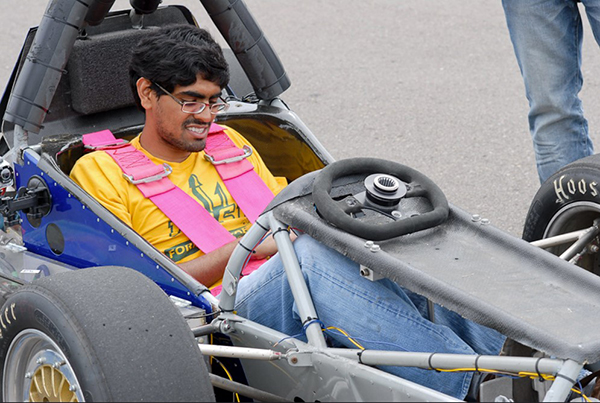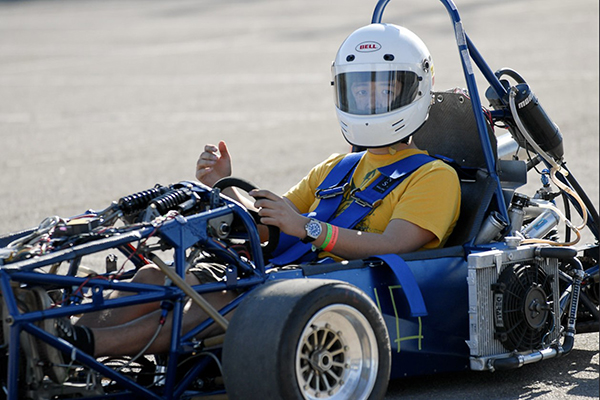Company Founded by Engineering Alumni Advances 1-hour COVID Test
By:
- Alison Caldwell, PhD, Bigelow Science Communication Fellow
Published Date
By:
- Alison Caldwell, PhD, Bigelow Science Communication Fellow
Share This:
Article Content
As businesses are forced to close their doors and communities hunker down to ride out the coronavirus pandemic, many people in the tech and engineering industries are looking for ways to help.
One such group includes the engineers behind Fluxergy, a medical diagnostic company based in Irvine, California, that designs and builds rapid point-of-care diagnostic testing devices. Over the last several weeks and in collaboration with UC San Diego Health faculty, they’ve been testing a system to diagnose COVID-19 in under an hour.
On March 30, 2020, they submitted an Emergency Use Authorization (EUA) to the U.S. Food and Drug Administration (FDA) in the hopes that their device can be deployed in medical settings within the next few weeks, making it possible for healthcare systems to test for the virus in under an hour, at the point-of-care. Currently, most COVID-19 tests are sent from the hospital or testing location to an outside lab to be analyzed, often taking hours or days for patients to get a result. During Fluxergy’s validation testing on patient samples with UC San Diego Health, they were able to provide results in an hour or less.
Most of the team behind Fluxergy met as engineering students at the UC San Diego Jacobs School of Engineering, where Tej Patel, Fluxergy co-founder and president, and others were members of the Formula Society of Automotive Engineers (SAE) team as undergraduates.

Tej Patel, co-founder of Fluxergy, as an undergraduate engineer and member of the Formula SAE race car team at UC San Diego.
Years later, over dinner one night with his wife Priya Bhat-Patel, while discussing coursework for her PhD in global public health, Patel started thinking about the challenges of accessible diagnostic testing in low resource settings.
“I thought, ‘Hey, figuring out how to bring those kinds of lab tests to those areas seems like a straightforward problem to solve,’” said Patel. “It was a mistake to think that it was easy, but seven years later, we’re finally ready to launch the product.”
Patel and co-founder Ryan Revilla, also a UC San Diego engineering alumnus, started out tinkering in Revilla’s garage, funding the project with their own money and testing it in Patel’s kitchen. “It was a fun side project,” said Patel. “It felt good to be working on something that could help people.”
Eventually, they connected with the co-founder of Kingston Technology, John Tu, who was very excited by their technology and the way it could be applied in healthcare. “Kingston Technology’s focus on manufactured computer products has been an asset for us from the get-go,” said Patel. “The manufacturability of the project has been a key component from the start.”
With Tu’s support, they’ve been building a lightweight, portable diagnostic system. About the size of a shoebox, the device includes disposable test cards that use printed circuit board and microfluidics technology to rapidly perform any number of diagnostic tests. The goal was to create a system that could be easily transported and used at the point of care, providing important diagnostic results even in regions with little access to laboratory testing resources.
They first began collaborating with UC San Diego Health faculty while working on a system to test a patient’s HIV viral load; they’re also working with UC Davis on commercial veterinary medicine applications for the device. They were getting close to officially launching the product when the COVID-19 pandemic began, and they rapidly changed their focus to address the global testing need.
“Our system is perfect for addressing many of the issues with current COVID-19 testing technologies,” said Patel. “Ordinary lab testing technologies require a many-step process, with different hoops you have to jump through to get it done. In the case of COVID-19, when it can take weeks to get results back, being able to do the testing in under an hour in the doctor’s office is a game changer.”
For the last several weeks, they’ve been testing their coronavirus assay with Dr. Davey Smith, a professor of medicine at UC San Diego Health and a translational research virologist. So far, the initial tests have been promising, and with EUA approval, they’ll be set to start sending the devices to other hospitals and medical facilities.
“This could be huge for situations like drive-through testing,” said Eric Mendonsa, the director of sales and marketing at Fluxergy. “Someone could drive up and provide their sample, then pull over and wait for the result. Right now, there are so many essential businesses that are still operating, and it’s important to know if folks in our community are getting sick or might be at risk of spreading the virus to others quickly.”
While each device can only run one test at a time, the device’s small footprint makes it easy for many of them to be set up side-by-side for higher through-put testing. The device is also unique in that it can test against many modalities at once. While it currently uses a traditional PCR approach to test for COVID-19 infection, they are also working on adapting the testing cartridge to include a serological test that could determine if a person has already had the virus and recovered.

Steve Lee, a UC San Diego engineering alumnus and member of the Formula SAE team, is now the director of Product Development for Fluxergy.
“Who’s been exposed without realizing it, or who’s been sick and recovered – that’s important information, too,” said Patel. “It’s especially important for healthcare workers, since they’re still going in and treating these patients every day, and need to know if they’ve already been exposed.”
In addition to collaborating with UC San Diego Health, the team is also working on identifying other health systems that might be able to use this device if it’s approved for this application.
Because of their connection to Kingston Technology, if demand increases, Fluxergy is confident that they’ll be able to rapidly scale up manufacturing of the system. “We’re aiming to be able to run several hundred thousand, or even millions, of test cards each month, if that’s the kind of demand we see from users,” said Patel.
But the goal isn’t just to have the system usable during this current crisis. “COVID-19 is here now, but it’s really about setting the infrastructure to have this in place for things that may happen in the future,” said Patel. “Unfortunately, this probably isn’t the last time we’ll face a situation like this. Our hope is to build better public health infrastructure so we can be better prepared to respond to situations like these in the future.”
Share This:
You May Also Like
UC San Diego is Strengthening U.S. Semiconductor Innovation and Workforce Development
Technology & EngineeringStay in the Know
Keep up with all the latest from UC San Diego. Subscribe to the newsletter today.



